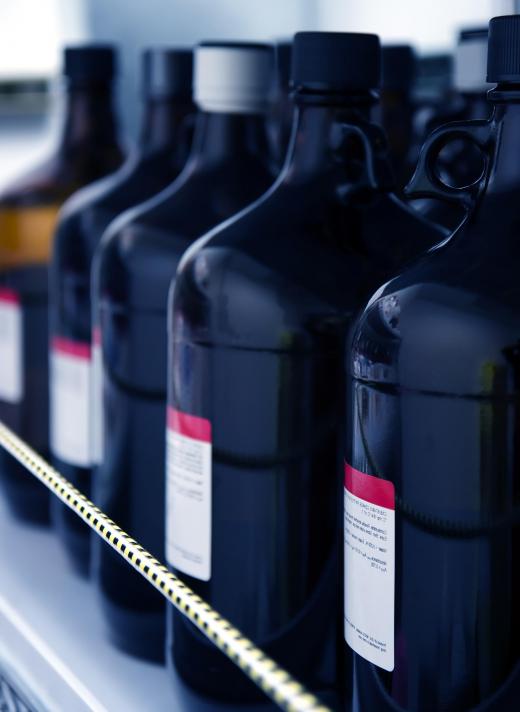What Is Protein Precipitation?
Protein precipitation is a method used to extract and purify proteins held in a solution. Large, complex molecules, proteins generally have parts that have a negative electrical charge and parts that have a positive charge, as well as hydrophilic and hydrophobic parts. There is a tendency for proteins in solution to clump together and precipitate out due to the attraction between the negatively and positively charged parts of the molecules and the mutual attraction of the hydrophobic parts. Counteracting this tendency, however, is the fact that in an aqueous solution, water molecules, which are polar, will tend to arrange themselves around the protein molecules due to the electrostatic attraction between oppositely charged parts of the water and protein molecules. This results in the protein molecules being kept apart and remaining in solution, but there are various methods for achieving precipitation of proteins.
The most commonly used method of protein precipitation is by adding a solution of a salt, a technique often referred to as "salting out." The salt most frequently used is ammonium sulfate. The interaction of the salt ions with water molecules removes the water barrier between protein molecules, allowing the hydrophobic parts of the protein to come into contact. This results in the protein molecules aggregating together and precipitating out of solution. As a general rule, the higher the molecular weight of the protein, the lower the concentration of the salt that is required to cause precipitation, so it is possible to separate a mixture of different proteins in solution by gradually increasing the salt concentration, so that different proteins precipitate at different stages, a process known as fractional precipitation.

The solubility of a protein in an aqueous medium can be reduced by introducing an organic solvent. This has the effect of reducing the dielectric constant, which in this context can be regarded as a measure of the polarity of a solvent. A reduction in polarity means there is less of a tendency for solvent molecules to cluster around those of the protein, so that there is less of a water barrier between protein molecules and a greater tendency toward protein precipitation. Many organic solvents interact with the hydrophobic parts of protein molecules, causing denaturization; however, some, such as ethanol and dimethyl sulfoxide (DMSO), do not.

Although proteins can have negatively and positively charged parts, often, in solution, they will have an overall positive or negative charge that varies according to the pH, and keeps them apart through electrostatic repulsion. In acidic conditions, with a low pH, proteins tend to have an overall positive charge, while at high pH, the charge is negative. Proteins have an intermediate point at which there is no overall charge — this is known as the isoelectric point and for most proteins, it lies in the pH range 4-6. The isoelectric point for a dissolved protein can be reached by adding an acid, usually hydrochloric or sulfuric acid, to reduce the pH to the appropriate level, allowing clustering and precipitation of the protein molecules. A disadvantage of this method is that the acids tend to denature the protein, but it is often used to remove unwanted proteins.
Other methods of protein precipitation include non-ionic hydrophilic polymers and metal ions. The former reduce the amount of water available to form a barrier between protein molecules, allowing them to clump together and precipitate. Positively charged metal ions can bond with negatively charged parts of the protein molecule, reducing the tendency of the protein to attract a layer of water molecules around it, again allowing the protein molecules to interact with one another and precipitate out of solution. Metal ions are effective even in very dilute solutions.
AS FEATURED ON:
AS FEATURED ON:












Discuss this Article
Post your comments